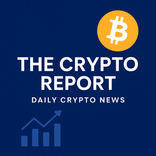The EU shocks crypto markets by exploring ethereum and solana for the digital euro

The Crypto Report
Daily crypto news
Europe's Digital Euro Shocker: Embracing Public Blockchains Like Ethereum and Solana?
In a move that has sent ripples across global financial markets, the European Union is reportedly exploring a groundbreaking approach for its much-anticipated digital euro. Instead of opting for a private, tightly controlled system, European officials are now considering leveraging established public blockchains, specifically Ethereum (ETH-USD) and Solana (SOL-USD), to power their central bank digital currency (CBDC).
This potential shift marks a significant departure from the conventional path taken by most central banks, including China, which have historically favored closed, permissioned networks for their digital currencies. If the EU proceeds with this strategy, the digital euro could bear a closer resemblance to popular U.S. stablecoins rather than the highly regulated digital yuan.
Why the Paradigm Shift?
The motivation behind this bold exploration is multifaceted. A primary driver appears to be the overwhelming dominance of U.S. dollar-backed stablecoins, which currently command over 98% of the global stablecoin market. European policymakers are increasingly concerned that such heavy reliance on American financial products could compromise Europe's long-term financial independence and sovereignty.
As ECB board member Piero Cipollone highlighted in April, effectively reducing the usage of stablecoins might necessitate a digital euro that not only earns public trust but also achieves widespread adoption. By considering public blockchains, Europe signals its intent to directly challenge U.S. private sector innovation rather than merely playing catch-up.
Demonstrable Benefits: Interoperability and Adoption
Choosing a public blockchain like Ethereum or Solana for the digital euro presents several compelling advantages. The most immediate and significant benefit is the potential for seamless integration with the existing, robust cryptocurrency infrastructure. A digital euro built on these networks could instantly connect with a vast ecosystem of DeFi (Decentralized Finance) platforms, digital wallets, and established global payment rails.
This inherent interoperability would dramatically smooth the path to adoption, reducing the friction and logistical hurdles that often impede the rollout of central bank digital currencies. For everyday users and businesses, this could translate into more efficient, cost-effective, and universally accessible digital payments.
Understanding the Trade-offs: Governance Concerns
However, this innovative approach is not without its complexities and potential downsides. While public blockchains offer unparalleled openness and connectivity, they also introduce the possibility of governments assuming a more prominent role in how these decentralized networks are governed. As Juan Ignacio Ibañez of MiCA Crypto Alliance aptly put it, the upside is superior integration, but the potential downside involves a stronger state interest in influencing the underlying blockchain governance.
This raises important questions about decentralization, privacy, and the balance of power between governmental bodies and the crypto community. Navigating these governance challenges will be crucial for the digital euro's long-term success and acceptance.
What's Next for the Digital Euro?
It's important to underscore that these discussions are still in the exploratory phase, and no final decision has been made. An ECB spokesperson has indicated that no specific model has been chosen, and the central bank continues to evaluate various options. The Governing Council of the ECB is anticipated to make a definitive decision by the end of 2025 regarding whether a digital euro will be issued at all.
What has fundamentally shifted, however, is the nature of the debate itself. The question is no longer merely "should Europe launch a digital euro?" but rather, "what kind of system will truly empower it – a private, controlled ledger, or a public, interoperable network that embraces the future of digital finance?"
Key Takeaways for Savvy Investors
For investors keenly observing the evolving landscape of digital currencies, this development is a critical one. The potential involvement of major public blockchains in a sovereign digital currency project could have profound implications for the value and utility of these underlying networks. It underscores a growing acknowledgment of blockchain technology's power beyond speculative assets.
Staying informed about the EU's decision-making process, tracking the performance of key cryptocurrencies like Ethereum and Solana, and understanding the broader implications for the global financial system are paramount. This move could catalyze further institutional adoption and legitimize public blockchain technology on an unprecedented scale.
While the road ahead for the digital euro is still being paved, Europe's willingness to consider public blockchain technology is a testament to the transformative potential of decentralization and a clear signal of an evolving global financial architecture. Prepare to witness history in the making as this critical decision unfolds.

The Crypto Report
Author bio: Daily crypto news
